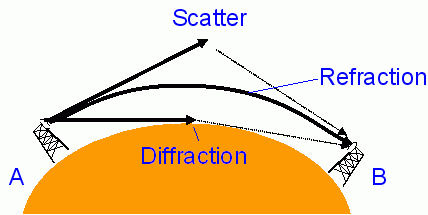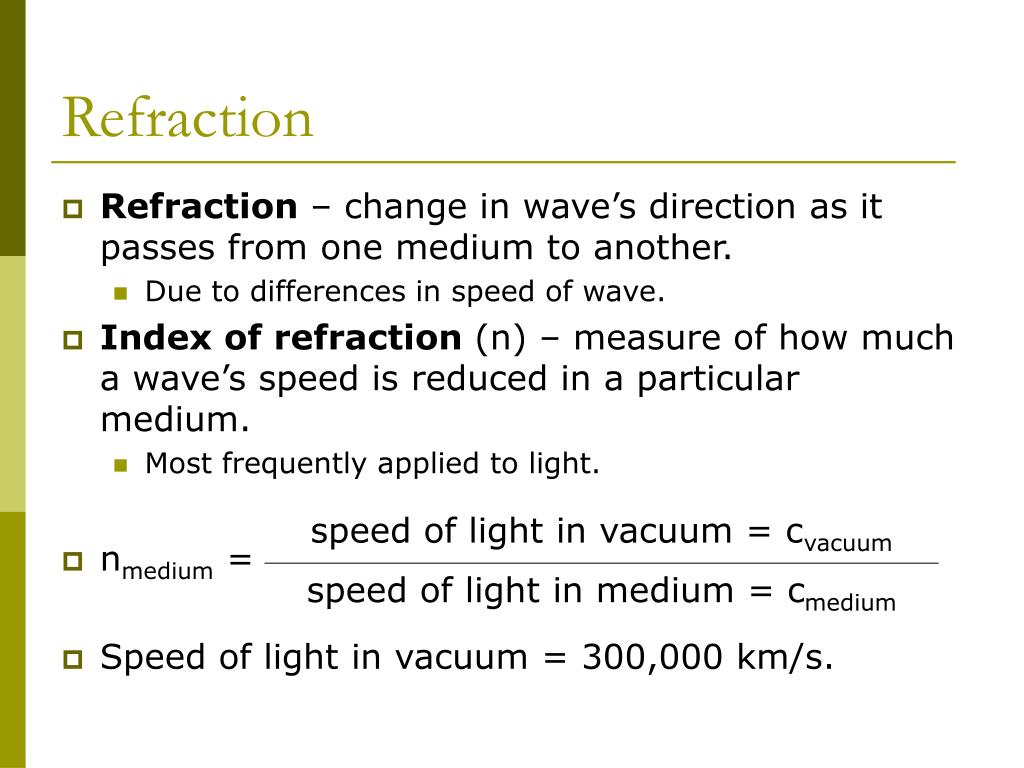

#Refraction vs diffraction series
Hence, diffraction patterns usually have a series of maxima and minima. When waves are added together, their sum is determined by the relative phases as well as the amplitudes of the individual waves so that the summed amplitude of the waves can have any value between zero and the sum of the individual amplitudes. The wave displacement at any subsequent point is the sum of these secondary waves. The propagation of a wave can be visualized by considering every particle of the transmitted medium on a wavefront as a point source for a secondary spherical wave. In classical physics diffraction arises because of the way in which waves propagate this is described by the Huygens–Fresnel principle and the principle of superposition of waves. Photograph of single-slit diffraction in a circular ripple tank Augustin-Jean Fresnel did more definitive studies and calculations of diffraction, made public in 18, and thereby gave great support to the wave theory of light that had been advanced by Christiaan Huygens and reinvigorated by Young, against Newton's particle theory. Explaining his results by interference of the waves emanating from the two different slits, he deduced that light must propagate as waves. Thomas Young performed a celebrated experiment in 1803 demonstrating interference from two closely spaced slits. James Gregory (1638–1675) observed the diffraction patterns caused by a bird feather, which was effectively the first diffraction grating to be discovered. Isaac Newton studied these effects and attributed them to inflexion of light rays. The results of Grimaldi's observations were published posthumously in 1665. The effects of diffraction of light were first carefully observed and characterized by Francesco Maria Grimaldi, who also coined the term diffraction, from the Latin diffringere, 'to break into pieces', referring to light breaking up into different directions. Thomas Young's sketch of two-slit Diffraction for water waves, which he presented to the Royal Society in 1803. In this case, when the waves pass through the gap they become semi-circular. Diffraction is greatest when the size of the gap is similar to the wavelength of the wave. The amount of diffraction depends on the size of the gap. Furthermore, quantum mechanics also demonstrates that matter possesses wave-like properties, and hence, undergoes diffraction (which is measurable at subatomic to molecular levels).

These effects also occur when a light wave travels through a medium with a varying refractive index, or when a sound wave travels through a medium with varying acoustic impedance – all waves diffract, including gravitational waves, water waves, and other electromagnetic waves such as X-rays and radio waves. If there are multiple, closely spaced openings (e.g., a diffraction grating), a complex pattern of varying intensity can result. This is due to the addition, or interference, of different points on the wavefront (or, equivalently, each wavelet) that travel by paths of different lengths to the registering surface. The characteristic bending pattern is most pronounced when a wave from a coherent source (such as a laser) encounters a slit/aperture that is comparable in size to its wavelength, as shown in the inserted image. In classical physics, the diffraction phenomenon is described by the Huygens–Fresnel principle that treats each point in a propagating wavefront as a collection of individual spherical wavelets. Infinitely many points (three shown) along length d project phase contributions from the wavefront, producing a continuously varying intensity θ on the registering plate.


 0 kommentar(er)
0 kommentar(er)
